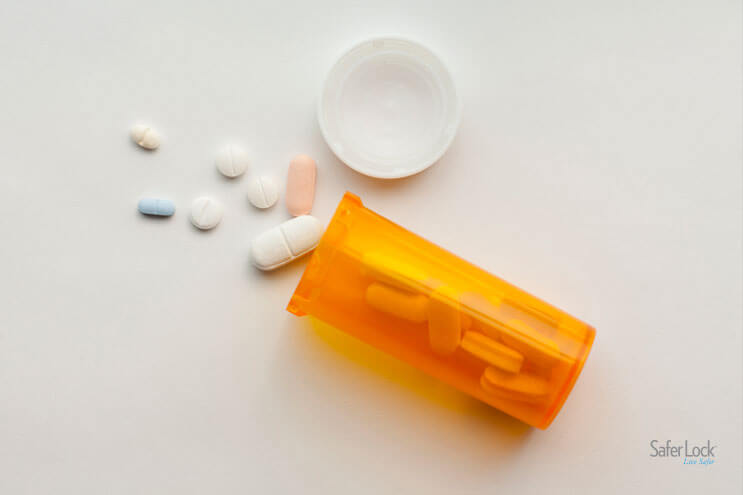A new street drug is responsible to a growing number of lethal overdoses in the U.S. It’s called “Gray Death” for its signature color and resemblance to powdery concrete. The latest combination of illegal drugs is surging through the streets and leaving high numbers of fatal overdoses, and baffled officials, in its wake.
No one knows exactly what’s in the combination of drugs, and the ingredients tend to vary from sample to sample. Batches of gray death seized by officials have included a variety of synthetic opiates, including fentanyl, acrylfentanyl, heroin, carfentanil - an opioid meant for large animals, and U-47700. Forensic specialists have no idea what makes it gray.
Gray Death: a Lethal Cocktail
Fentanyl and fentanyl-like substances are man-made synthetic opioids 100x stronger than morphine and 40-50x more potent than heroin. A single dose of fentanyl can be deadly. It can kill within minutes by paralyzing chest muscles and preventing breathing. The key ingredient for fentanyl can be obtained cheaply from overseas, where it’s sale isn’t regulated.
Carfentanil is an elephant tranquilizer that is 100 times more potent than fentanyl and 10,000 more powerful than morphine. Carfentanil is incredibly dangerous. A 2-milligram dose can be lethal; the equivalent of a couple of grains of table salt. DEA officials have warned that carfentanil can be absorbed through the skin or through accidental ingestion of airborne powder. Simply touching this powerful synthetic opioid can lead to a lethal overdose.
U-47700, also known as U4 or “Pink”, is a synthetic opioid that the DEA listed as a Schedule-I drug after it caused dozens of deaths in 2016. A combination of U4 and fentanyl was responsible for the overdose death of pop music celebrity Prince. At least 80 deaths, including two 13-year old children, were cited to U4 before the DEA and individual states raced to ban it last year.
These synthetic opioids, and the ingredients used to make them, are often inexpensive to obtain. They’re mixed together to create combination drugs and often passed off as other drugs like cocaine or heroin. They are even pressed into pills and sold to unsuspecting victims as opioid painkillers like Oxycontin.
The result is often deadly.
Even the overdose-reversal drug Naxalone can’t always fight the effects of these powerful synthetic opioids and synthetic combinations. When someone has overdosed on a substance that is 50 - 100x more potent than heroin, multiple doses of Naxalone may be required. And sometimes, even isn’t enough to halt the effects.
America’s Opioid Crisis
The emergence of gray death, U4, and other deadly street drugs adds one more layer of complexity to America’s opioid crisis. Overdose deaths are outnumbering death due to car crashes and have even surpassed gun homicides. The department of Health and Human Services says “Drug overdoses are the leading cause of injury death in America.”
Women are being hit hardest by the opioid epidemic, but the crisis is sparing no one. Men and women of all ages, demographics, geographical locations, and income levels are struggling.
Even infants are victims of this surging epidemic. According to the CDC, the rate of neonatal abstinence syndrome - babies born with drug withdrawal symptoms - has quadrupled in the last 15 years. From 2000 - 2012 there was a five-fold increase in drug-dependent babies. In states like Maine, Vermont, and West Virginia, rates of neonatal abstinence syndrome (NAS) exceeded 30 per 1,000 births.
The Road to Addiction
From 2000-2015, more than half a million people died from drug overdoses. The majority of drug overdose deaths involve an opioid. An average of 91 people die every day from an opioid overdose; that includes both prescription opioid painkillers and illicit opioid street drugs.
Since 1999, the amount of prescription opioids sold in the US has quadrupled. The rates of overdose deaths from opioid has increased at the same rate. Heroin use has also increased; according to the CDC, the strongest risk factor for succumbing to heroin addiction is an addiction to prescription opioid painkillers.
Prescription opioid painkillers can be highly addictive.
What starts as a legitimate need for pain relief can often turn to opioid misuse, abuse, and addiction. Misuse can happen in so many ways. It’s taking a dose of medicine sooner than recommended. It’s doubling up on a dose because you missed one. It’s taking medicine longer than needed.
It’s a family member who takes just one of your pills from your prescription bottle without you realizing it. And then one the next day. And two the day after.
Most people who abuse prescription opioids get them from a relative or friend for free. Many others buy them from relatives or friends, and 15% obtain them from a drug dealer.
Not everyone who gets a prescription for opioids will become addicted to opioids. But some will. And some of those people will go to great lengths to get more opioids: doctor shopping, purchasing painkillers from friends, purchasing painkillers off the street. At some point, heroin may become a cheaper, more accessible option. One day, the heroin may include a combination of fentanyl or carfentanil. One day that addiction may be fatal.
It’s a story that is taking place all across America. One that is setting the stage for new synthetic opioids like gray death – and other deadly drug combinations – to hit the street.




